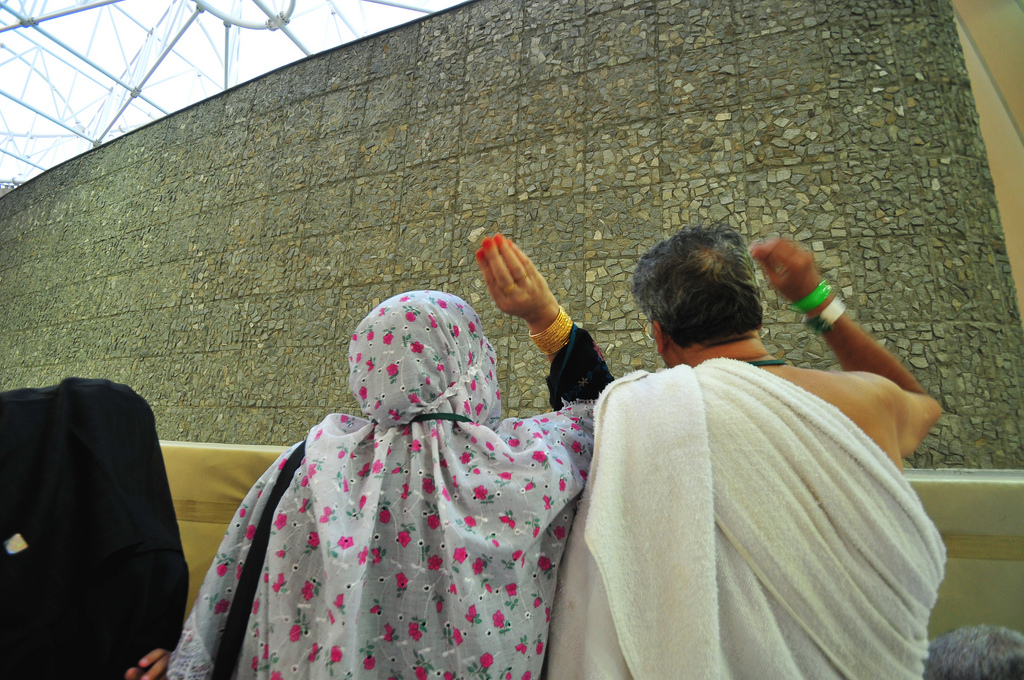The Hajj: A Guide
/A man and a woman perform the ritual of throwing stones to signify when Prophet Ibrahim threw stones at Satan.
Al Jazeera English November 2010
For 14 centuries, millions upon millions of Muslims have traveled to Mecca to practice rituals that are based on the Prophet’s practices during his last visit to Mecca. Performing the Hajj is one of the five pillars of Islam and should only be performed by those who are healthy and financially able.
Some believe that the Hajj represents man’s growth toward Allah and his eventual return to Him. Furthermore, it is believed that the Hajj serves as the symbolic demonstration of the philosophy of creation of Adam and those that carry out the Hajj reenact various other significant figures in Islamic tradition’s confrontations between Allah and Satan.
There are specific rituals that one practices when participating in the Hajj. Before entering the city of Mecca, pilgrims must change into simple white cloth known as the ihram. Women of the Hajj are not required to wear white cloth, but rather appropriate and modest clothing. This change of clothing indicates “that the pilgrim is now on sacred service and is prohibited from various activities.” In the special white clothes, the pilgrim recites a prayer that he is about to begin the Hajj.
Once in Mecca, the pilgrim goes to the Ka’bah and circles it counter-clockwise seven times, a practice called tawaf. The Ka’bah is extraordinarily significant in Islamic tradition. In the Qur’an it states that the Prophet Ibrahim and his son Ishmael built the Ka’ba has a Holy Shrine to serve as a house of monotheistic worship. The Black Stone also lies in the Ka’bah. Tradition holds that the stone came from heaven and was clear before turning black due to the amount of sins on earth.
Men on the hajj smiling (mostly) as they get their locks shaved (Photo: Al_sairafi/Instagram)
Following the circuit around the Ka’bah, comes the “running” between the two hills of Safa and Marwa, called sa’i. These two small hills are encompassed within the Great Mosque compound. This practice is done seven times and is meant to commemorate Hagar's search for water for Ishmael which supposedly took place between these hills. The place where she is said to have found water is also within the Great Mosque compound. Once this ritual has been completed, men shave or trim their hair. Women are supposed to cut off a finger’s tip length. All of practices at the Ka’bah and Safa and Marwa occur before the first official day of Hajj.
It is important to note that while there are designated prayer spaces for both sexes throughout all practices and rituals of the Hajj, women and men often end up praying side by side due to the large crowds.
Camping in Mina
(Photo: Sameradib/Instagram)
On the first day, the 8th of Dhul-Hijjah in the Islamic calendar, those making the pilgrimage travel to the small town of Mina to camp—located a few miles outside of Mecca. The following morning, pilgrims travel to the plain of Arafat where “they spend the entire day in earnest supplication and devotion.” After visiting Arafat, pilgrims go to another camp at Muzdalifa to stay for the night and to pray before returning to Mina.
Once back at Mina on the 10th of Dhul-Hijjah, pilgrims participate in throwing seven pebbles at a stone pillar that symbolizes the devil. This ritual is meant to represent when the Prophet Ibrahim threw stones at Satan when the devil tried to interfere in the sacrifice of his son. A sheep is then sacrificed after the stones are thrown in order to commemorate when a sheep was sacrificed as a substitute. Pilgrims then return back to Meccah to “end the formal rights of Hajj by performing the rituals at the Ka’bah and Sana and Marwa.
With the end of the Hajj, Muslims from around the globe trickle back to their home countries—bringing with them memories of their spiritually enriching experience in Mecca.



